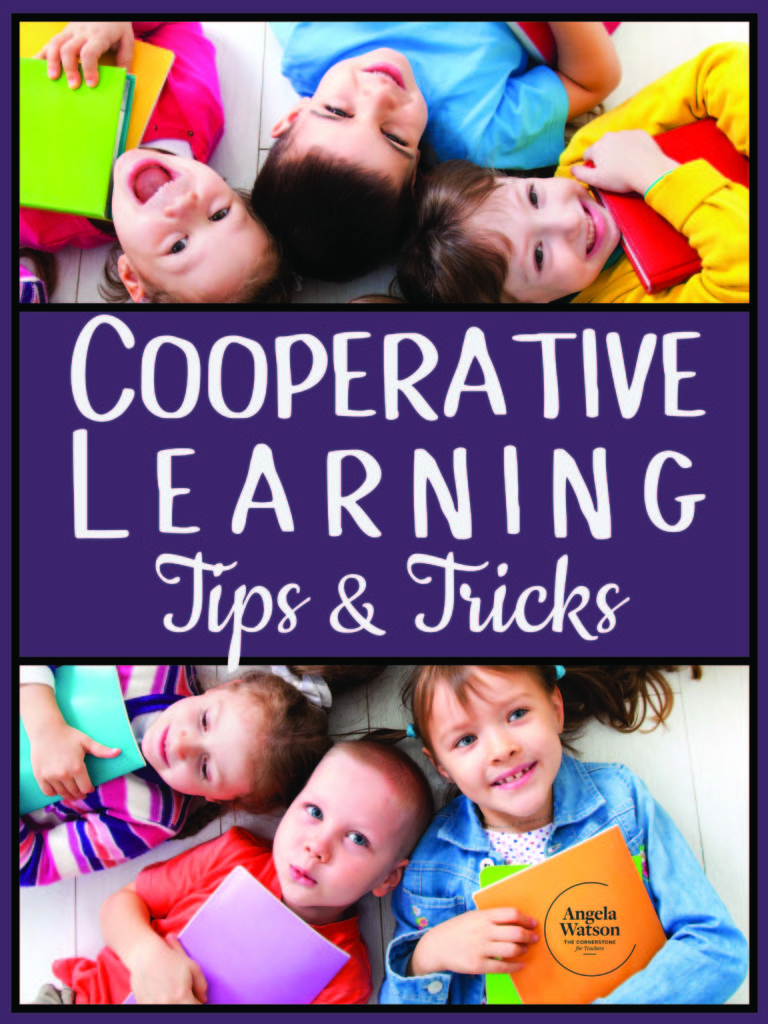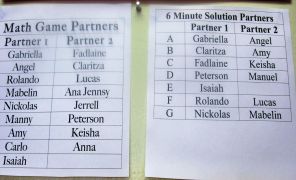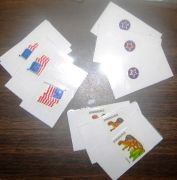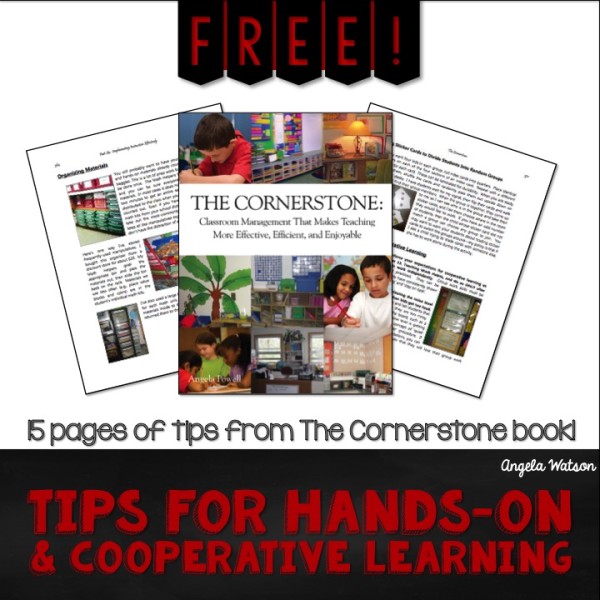Many teachers love the idea of partner and group work, but teaching students how to do it is a daunting task. This page (which is an overview of chapter 27 from The Cornerstone book) will help you create well-defined routines and procedures for cooperative learning strategies to expedite transitions and minimize off task behavior.

When to Use Cooperative Learning Activities
There are many advantages to group work activities. You can use the following three guidelines to help you choose whether to plan a cooperative group activity:
- Are negotiation, debating, collaborative problem solving, or team work skills being taught, practiced, and/or assessed?
- Will children be able to learn the material more effectively with peer support than without it?
- Do students need a break from independent work and teacher-directed activities?
Generally, I do not plan cooperative activities unless the lesson meets at least two of these guidelines.
Partner Work vs. Group Work

I use partner work far more often than group work activities because it’s so much easier for students to get along with one other person and the accountability level is higher. Having assigned partners makes the transition process quicker, so use student input to create suitable partner lists for each routine part of your day, encouraging children to select people that they work well with but are not necessarily their friends. When you begin partner work, ask children to raise their hands if their assigned partners are absent, and allow anyone without a partner to choose a pair of kids to join. Change the partner assignment every few weeks as students’ needs change. If needed, partner one can be in charge of getting materials and partner two can return them.
Determining Group Placement
Use your objectives to determine whether you want to choose the groups, have students choose groups, or have them arranged randomly. I choose groups when I want to have a balance of high, middle, and low achieving students in each group with few personality conflicts. For activities in which I don’t mind a lot of talking and some playing around, I let the kids pick their groups. I choose groups randomly for activities that are just for practice, won’t be graded, or don’t require a lot of prior knowledge or skill.
Choosing Groups Based on Learning Styles and Intelligences
If students will be creating projects or presentations, it may be advantageous to have a variety of strengths represented within each group, i.e., someone with interpersonal intelligence to take charge of the group and solve disputes, a verbal-linguistic child to do the writing or oral presentations, and a visual-spatial child to illustrate. This will ensure that the group runs smoothly and each student is able to express what she has learned in ways that are comfortable for her.
Using Sticker Cards to Divide Students Into Random Groups

If you want four kids in each group, cut index cards into quarters. Place identical stickers on each of the four sections of an index card. Repeat with a different sticker for each card. These can be laminated for durability. When you are ready to use them, shuffle the cards and randomly pass them out upside down on students’ desks. I have kids wait for my signal, then flip their cards and walk around to find their group members. When the group is together, they come up to me so I can see who is in the group and take their sticker cards, and I let them choose where in the room they would like to work. If you have an odd number of students, then the child whose sticker card did not match a group can choose any group to join. You may want to warn your students about trading sticker cards to switch the groups around—my policy is that if I see a child trying to trade cards with someone else, she has to work alone during the activity.
Managing cooperative learning

Introduce and reinforce your expectations for cooperative learning (as discussed in The Cornerstone’s Chapter 13, Teaching Work Habits, and do so ONLY after students are able to work independently.
Group work skills must be taught, modeled, and practiced. They can be introduced once students have consistently shown the ability to ‘follow along’ and ‘stay on-task’.
Set up a system for monitoring the noise level and have consequences when kids get too loud.
You could turn on soft music and tell students that if they can’t hear the music, they are too noisy. You could have a visual on the board, such as a stoplight, to show when the noise level is getting too high. Remember that the concept of ‘quiet’ must be taught like any other procedure. If students do not meet your expectations, you can give specific warnings to individuals that they will lose their group work privileges if they cannot work quietly. Give three whole-class warnings about being too loud, and then students must either work silently for five to ten minutes or end the activity altogether. After this happens a few times, the kids begin to self-regulate, and they will say things to each other like, “Shh! If we’re not quiet, she’s gonna make us clean up!” That’s much more effective than having YOU warn them!
If you are asked the same question by two groups, you may want to stop the whole class to clarify and take additional questions.
Sometimes things are unclear to students when they seem obvious to the teacher. Rather than going over and over the same questions, give a pre-arranged signal for everyone to stop and hear your clarification (“Listen carefully, this may be a question that you want to have answered, too.”).
Be prepared to ‘jump start’ each group after 2-3 minutes to make sure they have begun working and resolved any initial differences in opinion.
Wait until the group is settled in one spot and has their materials out, and then check on them. You may want to summarize what the group is about to do to make sure they have a starting point: “So Michelle is going to read the first question, and then Ahmed is going to answer it? And you’re taking turns with each section? Great, okay, go ahead, Michelle, first one.”
Use a rubric or checklist for students to grade their group’s collaboration.
Have students indicate whether the group stayed on-task, worked together, etc. You may also want them to grade their individual performance and/or their group members’ performances to make sure that everyone was pulling their own weight. This evaluation is for accountability purposes only. I use a form that was included in the teacher resource guide for our social studies curriculum.
Use a timer or bell to get the class’ attention and signal when time is up.
When students hear the bell, they should get quiet to hear your directions.
Download More Tips for Cooperative Learning and Group Work for FREE!

Assigning specific group work roles or jobs to each person can work wonders in keeping all kids engaged and preventing squabbles within a group. Learn how in a free download of Chapter 27 of The Cornerstone book, “Hands On and Cooperative Learning”! You’ll also learn how to train a student group leader to run small group instruction during practice and reinforcement time (it’s not as difficult as you think, and the kids benefit tremendously!) The chapter will also show you how to teach students to solve social problems during group work, with specific details on how to teach respect and supportiveness. And when group work doesn’t work? Chapter 27 will explain what to say to your kids and how to re-train them. There are many benefits of group work–once you learn how to manage it, the possibilities are endless!

Angela Watson
Founder and Writer
Sign up to get new Truth for Teachers articles in your inbox
OR

Join our
community
of educators
If you are a teacher who is interested in contributing to the Truth for Teachers website, please click here for more information.
















Discussion